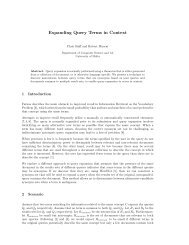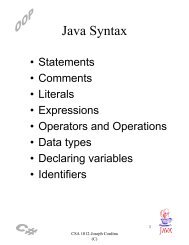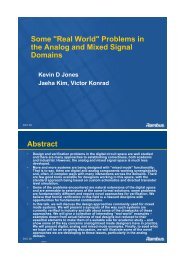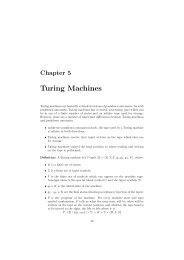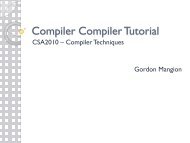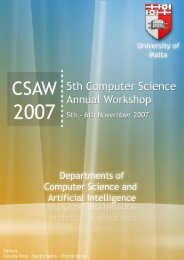Proceedings of CSAW'04 - FTP Directory Listing - University of Malta
Proceedings of CSAW'04 - FTP Directory Listing - University of Malta
Proceedings of CSAW'04 - FTP Directory Listing - University of Malta
You also want an ePaper? Increase the reach of your titles
YUMPU automatically turns print PDFs into web optimized ePapers that Google loves.
Forecasting Using Non-Linear Techniques In Time Series Analysis 25<br />
One needs to predict a future state at a desired time point n + 1 using the last value at time point<br />
n. One scans the list <strong>of</strong> all states in phase space and tries to find the one closest (according to some<br />
norm) to the phase state value at time point n.<br />
If a time point n 0 Is found where the phase state is similar to that at n (this means x n0 it is close<br />
to x n ). Then the continuity <strong>of</strong> the underlying dynamical system and the representation guarantees<br />
that x n0+1 will also be close to x n+1 .<br />
However usually it is not the actual states that are measured but one or more quantities which<br />
depend on these states. More <strong>of</strong>ten than not the measurement function is as unknown as the<br />
underlying equation <strong>of</strong> motion.<br />
Thus we have scalar measurements S n = s(x n ), where x n is the actual state at time point n and n<br />
can take the values from 1 to N. One can then make use <strong>of</strong> a set <strong>of</strong> such measurements taken at a<br />
particular time point n and (m−1) time points prior to n to represent the original sequence <strong>of</strong> phase<br />
states. This is called a delay reconstruction and the sequence <strong>of</strong> phase state values representing is<br />
called the delay vector:<br />
S n = (s n−(m−1) v, s n−(m−2) v, . . . , s n − v, s n )<br />
This introduces two adjustable parameters into the prediction method (which in principle is parameter<br />
free). The number <strong>of</strong> dimensions m and the time delay which is the time delay v between<br />
successive measurements. For all measurements s 1 , . . . , s n available so far, one can construct the<br />
corresponding delay vectors s (m−1) v + 1, . . . , s n .<br />
In order to predict a future measurement s n + d n , one can find the embedding vector closest to s n<br />
and use s no+dn as a predictor. This scheme has been used in tests for determinism by Kennel and<br />
Isabelle (1992). The idea may go back to Pikovsky 1986. The method used by Sugihara and May<br />
(1990) is closely related.<br />
This means that one scans all measurements and for each measurement the whole delay vector <strong>of</strong> s n<br />
is compared with the delay vectors <strong>of</strong> each measurement in the phase state data i.e. for points 1 to<br />
n − 1. To compare delay vectors <strong>of</strong> two points one could check the distance between corresponding<br />
elements <strong>of</strong> the two delay vectors. If each <strong>of</strong> the distances between the pairs are all within a desired<br />
distance then the two delay vectors are close.<br />
Finding just the closest delay vector close to the s n is not enough. Any measurement <strong>of</strong> a continuous<br />
quantity makes sense within a finite boundary or resolution. The size <strong>of</strong> this limit or resolution<br />
depends on the differences arising from the measurement equipment and the fact that the values are<br />
eventually discretised. This implies that it is probable there would be more than one delay vector<br />
which would come reasonably close the delay vector <strong>of</strong> s n . Each <strong>of</strong> these have to be considered<br />
as valid predictors <strong>of</strong> the future point. They have to be considered as neighbours <strong>of</strong> s n Every<br />
neighbour <strong>of</strong> s n will be used to predict a future value. The average <strong>of</strong> these predicted future values<br />
will be the finally accepted prediction<br />
Thus the neighbourhood distance eps is another is another important parameter which has an<br />
effect on the success <strong>of</strong> prediction. This determines how many neighbours are found, which in turn<br />
effects the average predicted value.<br />
This method is very inefficient if more than a few predictions are needed, e.g. because prediction<br />
error needs to be determined accurately to find the optimal set <strong>of</strong> parameters <strong>of</strong> time delay and<br />
dimension. For each prediction all points in the reconstruction are considered. All points are tested<br />
and most are rejected because they are too far away.



